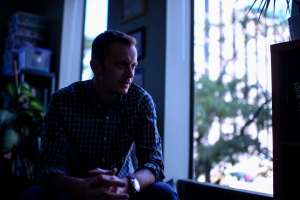
Second Wind Fund helps at-risk students navigate complicated mental health care system
The Colorado organization will even pay for up to 12 therapy sessions
By Shelly Bradbury | sbradbury@denverpost.com | The Denver Post
PUBLISHED: | UPDATED:
When students in Colorado experience a mental health crisis, they can face a labyrinthine of insurance questions, therapist options, costs and scheduling concerns before they actually connect with a therapist and get help.
But Second Wind Fund cuts through that red tape by quickly providing youth at risk of suicide with a list of qualified therapists and paying for up to 12 sessions with that therapist.
“This is the type of service every school district needs,” said Dean Bradshaw, a counselor at Fruita Middle School in Mesa County. “It’s invaluable to us.”
Second Wind Fund works by taking referrals — mostly from elementary, middle and high school mental health staff — about students who are at risk of suicide and need immediate help. Within a few hours of a referral, Second Wind Fund will send a list to the school of qualified local therapists who are willing to see students in an expedited fashion.
Students or their parents can pick a therapist from that list and go for up to 12 free sessions; the therapists bill Second Wind Fund directly.
“A lot of times at community mental health centers, the wait time can be upwards of 50 days, and I think when you’re a parent potentially dealing with a suicide crisis, that’s not really acceptable,” Second Wind Fund executive director Chris Weiss said. “So that’s where we really utilize the strength of our privatized network.”
The 18-year-old nonprofit organization is a recipient of funding from the Denver Post Community Foundation’s Season to Share program, serves youth under the age of 20 and is at work in 30 Colorado counties. The organization typically pays for 12 therapy sessions when the student’s family has a household income under $75,000, Weiss said, although the organization considers each situation on a case-by-case basis.
“We’ve provided therapy to families of all sorts,” he said. “It just may be they’re experiencing that moment of lacking funds, they just lost their insurance, they just lost their job, and that is when Second Wind Fund comes in.”
The average age of the students they help is 13, Weiss said, and the organization has received over 6,500 referrals since it began in 2002 after a spate of four suicides at one high school.
Bradshaw said he’s referred 34 students to Second Wind Fund during the three years his middle school has been working with the organization, and said that it’s brought efficiency and consistency to what used to be a daunting process.
“It would be just random, like, ‘Yeah, this therapist is good, but I don’t know if they take your insurance, or ‘This person is good but I don’t know if they have availability,’ ” Bradshaw said of trying to get students help before the school district began working with Second Wind Fund. “All those were things we were figuring out by the seat of our pants for our parents. It was so hard for all of us to work together. This has streamlined everything.”



